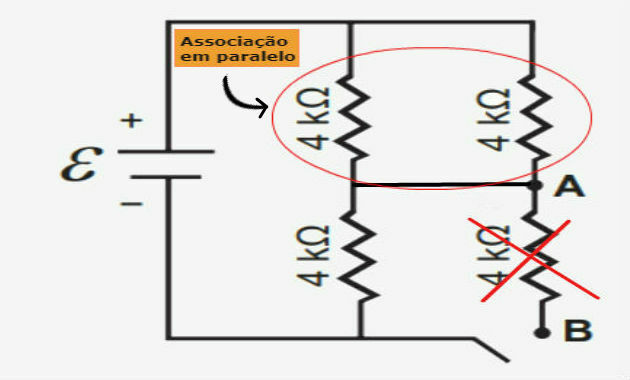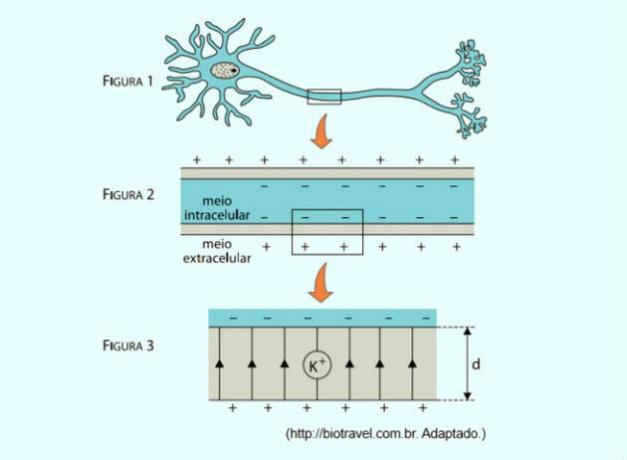Urbanization is a process that gained strength after the Industrial Revolution, but it still operates in the world as a whole. While the developed countries have an already consolidated urbanization, the underdeveloped ones still urbanize, belatedly, in an unplanned process.
Below we will see 10 exercises on the topic "Urbanization" to test your knowledge. All questions are commented to help in your studies if you have any questions.
Good luck!
question 1
Urbanization is a phenomenon characterized by the growth and development of cities, resulting in the concentration of urban population in urban areas. This process involves the transformation of the environment, the emergence of urban infrastructure and the intensification of economic activities. So please answer:
A) Urbanization is a phenomenon exclusive to developed countries, not occurring in developing countries.
B) Urbanization is a process that occurs only due to the natural growth of the urban population.
C) Urbanization has nothing to do with the intensification of economic activities in cities.
D) Urbanization results in the concentration of the rural population in urban areas.
E) Urbanization is driven by factors such as rural exodus and industrial development.
Correct alternative: letter E) Urbanization is driven by factors such as rural exodus and industrial development.
Explanation: The supporting text mentions that urbanization is a result of the rural exodus, that is, the displacement of the population from the countryside to the cities, in addition to industrial development. These factors contribute to the growth of urban areas and the concentration of population in these regions.
question 2
Cities, as a place where many people live, constantly suffer from urban problems, whether in the social or environmental sectors. Therefore, select below the alternative that is not linked to a common problem in cities:
A) Unemployment.
B) Criminality.
C) Lack of adequate housing.
D) Lack of nutrients in the soil.
E) social inequality.
Correct answer: D) Lack of nutrients in the soil.
Explanation: the lack of nutrients in the soil is a more common problem in the countryside, where agriculture is practiced intensively and on a large scale, causing soil depletion. All other alternatives present problems that are common in cities, be it big or small.
question 3
Urbanization in Brazil is a complex process that involves the transformation of rural areas into urban areas, with the growth of cities, expansion of urban infrastructure and concentration of population in centers urban. This phenomenon has been accompanied by several challenges, such as disorderly growth, lack of adequate urban planning, social inequality, lack of basic infrastructure and degradation environmental. Urbanization in Brazil is closely linked to the process of industrialization and rural exodus, and its consequences affect the quality of life of the population and the sustainable development of cities. Therefore, which of the following factors is frequently associated with the urbanization process in Brazil?
A) Expansion of family farming.
B) Population reduction in urban areas.
C) Increased agricultural production.
D) Development of rural infrastructure.
E) Population concentration in urban centers.
Correct answer: E) Population concentration in urban centers.
Explanation: Population concentration in urban centers is an important feature of urbanization and is associated with challenges such as need for infrastructure, adequate housing, public services and urban planning to meet the demands of the growing population in cities.question 4
Gentrification is an urban process that occurs in previously degraded or low-income areas, when there is an influx of investments and improvements in infrastructure, resulting in real estate appreciation. Generally, gentrification is associated with the arrival of wealthier residents, changes in the urban landscape, and rising rental and property prices. Therefore, check below one of the main consequences of this gentrification:
a) Promotes the revitalization of degraded areas and improvement in the quality of life of local residents.
b) It causes the depreciation of property values and the reduction of investments in urban areas.
c) It results in social segregation and expulsion of low-income residents from affected areas.
d) Stimulates the development of public policies for social inclusion and reduction of inequalities.
e) Contributes to cultural diversification and strengthening of local communities.
Correct answer: c) It results in social segregation and expulsion of low-income residents from affected areas.
Explanation: Gentrification involves real estate appreciation and rising rent and property prices, which ends up gradually evicting former low-income residents. This results in social segregation as wealthier residents replace older ones. residents, contributing to the exclusion and displacement of the low-income population to more away.
question 5
Accelerated urbanization brings with it a series of environmental problems in cities. The increase in urban population and human activities results in several negative impacts, such as atmospheric pollution, the accumulation of solid waste, the degradation of natural resources and the loss of biodiversity. These problems directly affect people's quality of life and the balance of urban ecosystems.
Among the main urban environmental problems, we can highlight:
a) The preservation of natural resources and the promotion of urban sustainability.
b) Minimizing noise pollution and controlling greenhouse gas emissions.
c) Encouraging the use of public transport and reducing energy consumption in homes.
d) Lack of recycling measures and public awareness about solid waste management.
e) Valuing green areas and protecting urban biodiversity.
Correct answer: d) Lack of recycling measures and public awareness about solid waste management.
Explanation: solid waste management, especially in large cities, is a long-standing problem. Inadequate waste management, lack of sanitary landfills, lack of public awareness and lack of recycling policies exacerbate this problem.
question 6
9. (Enem 2016) Rio de Janeiro has immediate projection in the state itself and in Espírito Santo, in part of the south of the state of Bahia, and in the Zona da Mata, in Minas Gerais, where it has shared influence with Belo Horizon. They make up the urban network of Rio de Janeiro, among other cities: Vitória, Juiz de Fora, Cachoeiro de Itapemirim, Campos dos Goytacazes, Volta Redonda - Barra Mansa, Teixeira de Freitas, Angra dos Reis and Teresopolis.
Available in: http://ibge.gov.br. Accessed on: 9 Jul. 2015 (adapted).
The concept that expresses the relationship between the space presented and the city of Rio de Janeiro is:
a) Pioneer front.
b) Transition zone.
c) Polarized region.
d) Conurbation area.
e) Metropolitan periphery.
Correct answer: c) Polarized region.
Explanation: the statement describes the areas of influence of a certain metropolis in the region around it, even in other states. In Geography, we call this area of influence the "polarized region", that is, the region around the metropolis, composed of smaller cities, which is influenced by this larger city.
question 7
(UNESP 2019) The process of demetropolization, observed in Brazil since the end of the 20th century, is characterized
A) by the retraction of the tertiary sector in the face of urban movements to share goods and services.
B) by the legal conflict in the regulation of urban land, as a result of conurbation between cities.
C) by the record of greater population growth in medium-sized cities, when compared to metropolises.
D) by the reduction of metropolitan areas as a result of population saturation.
E) by the fragmentation of metropolises into sub-regions, to optimize financial and administrative resources.
Correct answer: letter C) due to the record of greater population growth in medium-sized cities, when compared to metropolises.
The process of demetropolization refers to the more expressive population growth in medium-sized cities compared to metropolises. This is due to a series of factors, such as economic decentralization, the search for a better quality of life, the availability of jobs in smaller urban areas, the improvement of infrastructure conditions and services in these cities, among others. This phenomenon results in a relative weakening of metropolises and a strengthening of medium-sized cities, altering the country's urban and demographic dynamics.
question 8
(UFRS) As an effect of the inadequate action of man on the environment, the problem of water pollution arises. In Brazil, several rivers are dying, such as the Tietê, which crosses the state of São Paulo, and the dos Sinos, which receives industrial pollutants from several cities in Greater Porto Alegre.
Which measures below, if adopted, would alleviate the situation described?
I – Treatment of urban sewage and industrial waste;
II – Control of the use of chemical fertilizers and pesticides in agriculture developed in the hydrographic basins;
III – Community involvement in campaigns to restore water quality;
IV – Planting of native species along the banks of rivers, to rebuild the riparian forest.
a) Only I and II
b) Only I and III.
c) Only I, III and IV.
d) Only II, III and IV.
e) I, II, III and IV.
Correct answer: e) I, II, III and IV.
Explanation: all statements present viable alternatives that should be implemented by governments local, along with other public policies, to assist in the recovery of bodies of water that are experiencing water problems. pollution.
question 9
(Enem – 2011) The heat island phenomenon is the most striking example of the modification of the initial conditions of the climate by the process of urbanization, characterized by soil modification and anthropogenic heat, which includes all human activities inherent in its life in the city.
BARBOSA, R. v. R. Green areas and thermal quality in urban environments: a study on microclimates in Maceió. São Paulo: EdUSP, 2005.
The text exemplifies an important socio-environmental alteration, common to urban centers. The maximization of this phenomenon occurs
a) by the reconstruction of the original beds of the watercourses previously channeled.
b) by recomposition of green areas in the central areas of urban centers.
c) by the use of materials with high reflectivity at the top of buildings.
d) by the soil sealing process in the central areas of cities.
e) for the construction of expressways and land traffic management.
Correct answer: d) by the soil waterproofing process in central areas of cities.
Explanation: The heat island phenomenon is caused by the replacement of natural and permeable areas by urban buildings and impermeable surfaces such as asphalt and concrete. This waterproofing of the soil prevents the absorption of rainwater and reduces evaporation, leading to an increase in local temperature. In addition, urban areas tend to have a higher density of buildings, floors and infrastructure, generating more anthropogenic heat.question 10
(UFRGS 2019) Read the excerpt below.
(...) developments that elect certain spaces in the city, considered centralities, and that transform them into areas of public and private investment (...) culminate in real estate appreciation, implying the installation of businesses with goods accessible to the higher social classes and the impossibility of permanence of residents with lower financial resources, who are thus replaced by residents with greater purchasing power, which results in the elitization of the local.
Adapted from: BIDOU-ZACHARIASEN, Catherine. Introduction. Back to town. São Paulo: Annablume, 2006.
p.21-58.
The segment deals with the concept of
A) disruption.
B) gentrification.
C) metropolization.
D) urbanization.
E) spoliation.
Correct answer: letter B) gentrification.
Explanation: The excerpt mentions real estate appreciation in certain areas of the city, which results in the replacement of residents with lower purchasing power by those with higher purchasing power, leading to the elitization of the place. This process is known as gentrification, which occurs when areas previously occupied by residents of lower social classes are revitalized and transformed into spaces of interest to the upper classes, often evicting the original residents due to rising property prices and cost of life.
To learn more, visit:
- Urbanization
- Urban Geography
- Brazilian urbanization
MARQUES, Vinicius. Exercises on Urbanization (with feedback).All Matter, [n.d.]. Available in: https://www.todamateria.com.br/exercicios-sobre-urbanizacao-com-gabarito/. Access at:
See too
- Exercises on environmental issues
- Geography questions that fell on the Enem
- Geography Enem: subjects that fall the most
- Main environmental problems
- Industrial Revolution questions
- Enem Sociology Questions
- Natural sciences and their technologies: Enem
- 15 Questions about Globalization with Answer Key



